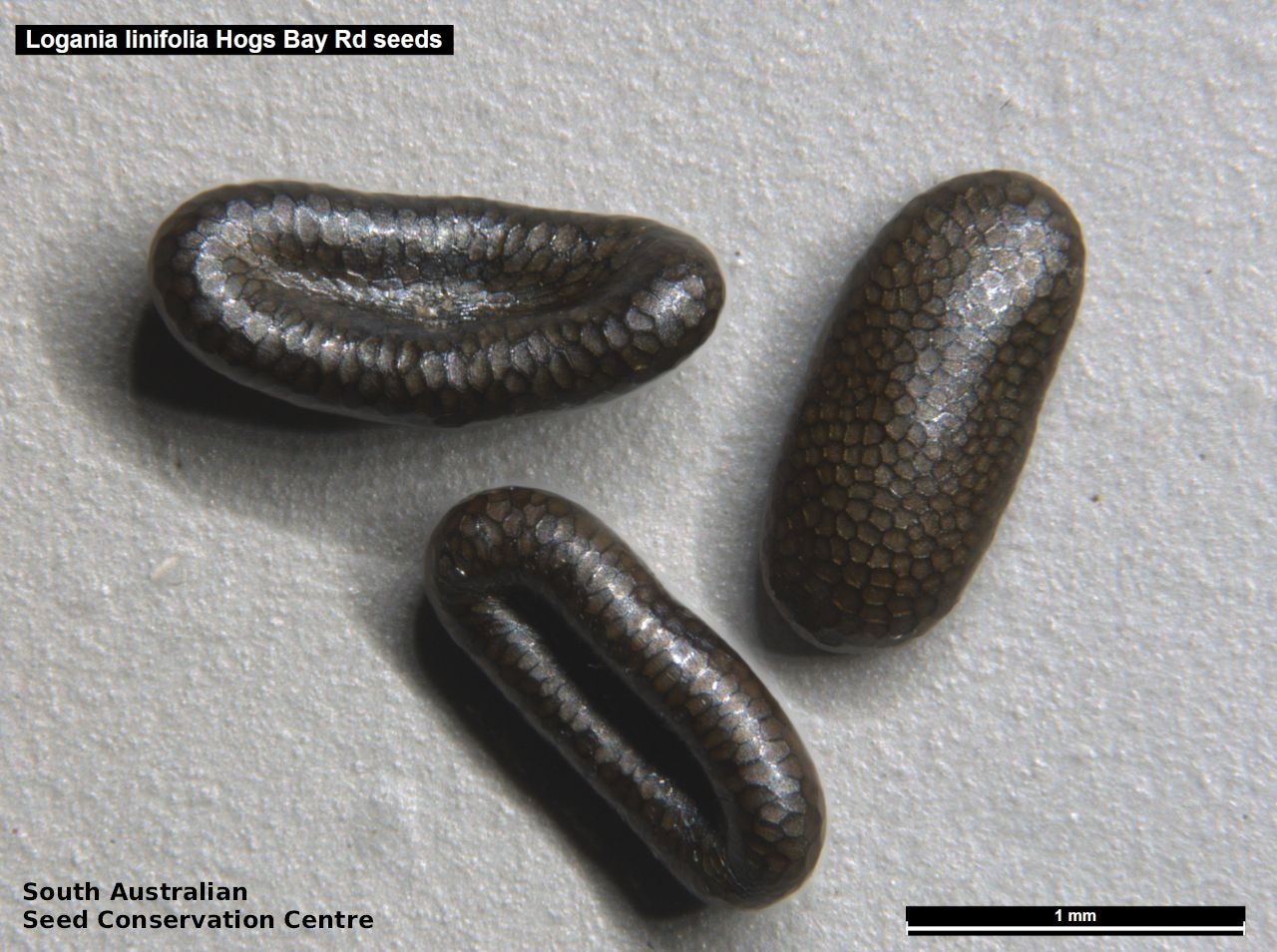










Botanical art
Common names
Flax-leaf Logania
Etymology
Logania, named after James Logan (1674-1751), an Irish born botanist who emigrated to North America, became Governor of Pennsylvania and wrote a book on the sexuality of plants. Linifolia, means having leaves like the genus Limum (flax).
Distribution and status
Found in the southern part of South Australia from the Eyre Peninsula to the upper South-east growing in mallee and mallee-heath communities, on dune sands, sandy loams or rock outcrops. Also found in Victoria. Native. Common in South Australia. Common in Victoria.
Herbarium regions: Flinders Ranges, Eyre Peninsula, Murray, Yorke Peninsula, Southern Lofty, Kangaroo Island, South Eastern, Green Adelaide
AVH map: SA distribution map (external link)
Plant description
Erect shrub to 1 m high; dioecious; branches minutely hairy. Leaves sessile, linear to narrowly elliptic, to 20 mm long and 4 mm wide; minutely papillose. Inflorescence a terminal panicle with several 7-flowered clusters, each group on peduncles to 10 mm long with unisexual white flowers. Flowering between August and November. Fruits are orange-brown capsule to 6 mm long and 3 mm wide. Seeds are shiny black long convex seed to 1.8 mm long and 0.8 mm wide, with a reticulate surface. Seed embryo type is linear, fully-developed.
Seed collection and propagation
Collect seeds between October and January. Collect maturing capsules that are fat, turning orange-brown in colour, have not open and contain hard black seeds. Place the capsules in a tray and leave to dry for one to two weeks to split. Rub the capsules gently with a rubber bung to dislodge the seeds. Use a sieve to separate the unwanted material. Store the seeds with a desiccant such as dried silica beads or dry rice, in an air tight container in a cool and dry place. From one collection, the seed viability was high, at 90%.
| Location | No. of seeds (weight grams) | Number of plants | Date collected | Collection number Collection location | Date stored | % Viability | Storage temperature |
|---|---|---|---|---|---|---|---|
| BGA | 500 (0.67 g) | 12 | 24-Nov-2006 | TST102 Murray | 1-Aug-2007 | 90% | -18°C |
Number of plants: This is the number of plants from which the seeds were collected.
Collection location: The Herbarium of South Australia's region name.
% Viability: Percentage of filled healthy seeds determined by a cut test or x-ray.